2/5/2025

AB
What Is Augmented Data Analytics? A Beginner’s Guide
It’s AI/ML-infused BI that automates data prep, anomaly detection, and plain-English narrative generation - slashing analysis time from days to minutes. By letting anyone ask questions in natural language and instantly get charts or summaries, ADA democratizes insights and turns raw data into action.
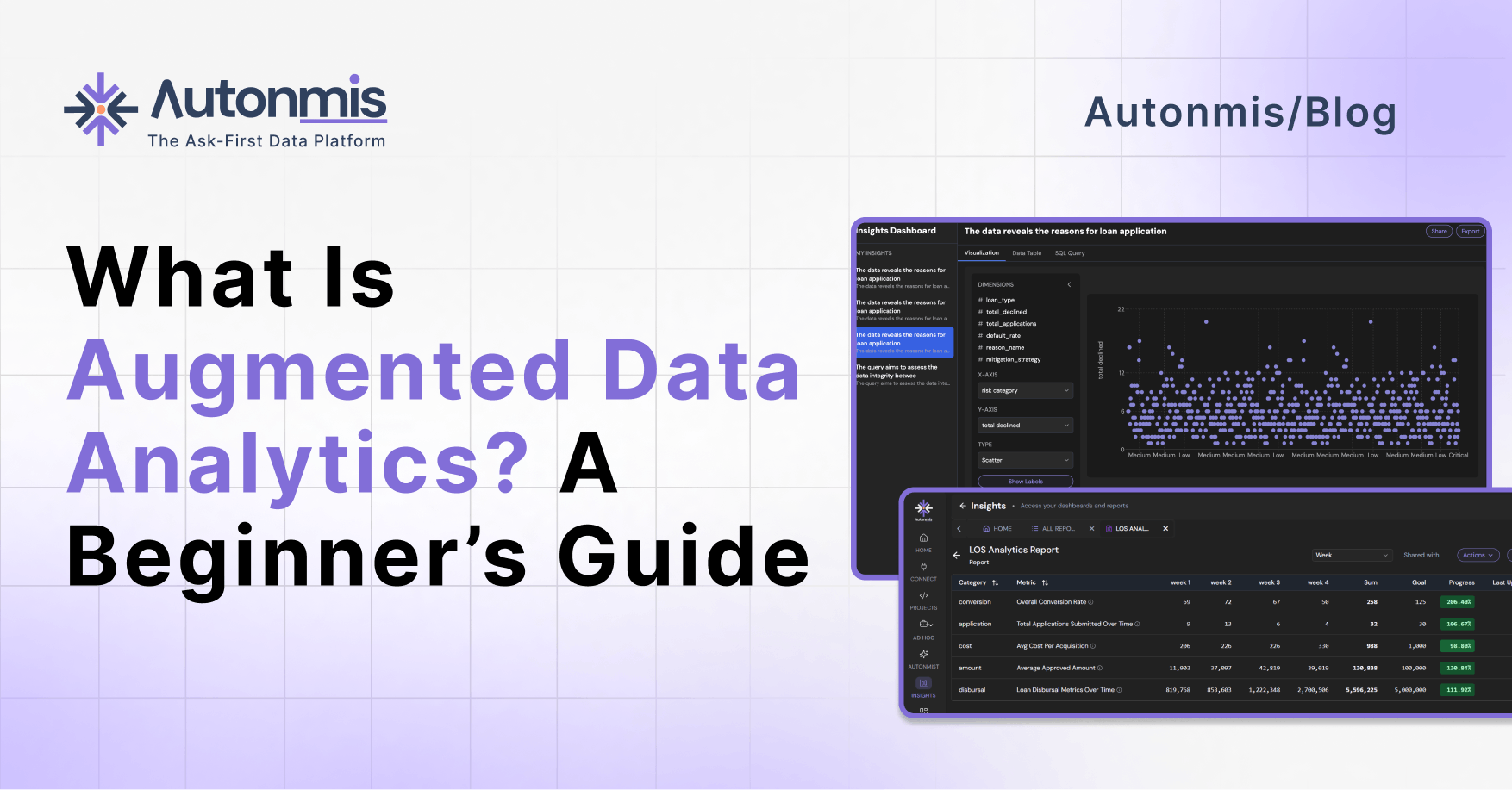
What Is Augmented Data Analytics?
Augmented Data Analytics (ADA) fuses AI/ML with traditional BI to automate the grunt work - data prep, pattern discovery, anomaly detection and even narrate findings in plain English. Instead of spending 80 % of your time cleaning spreadsheets, ADA lets you focus on interpreting insights and driving action. By 2025, Gartner predicts 75 % of all analytics stories will be auto-generated via ADA, not crafted by hand.
Defining Augmented Data Analytics
Augmented analytics is “the use of enabling technologies such as machine learning and AI to assist with data preparation, insight generation and insight explanation to augment how people explore and analyze data in analytics and BI platforms.”
— Gartner via Tableau
At its core, ADA:
- Automates data cleaning, merging, and transformation pipelines.
- Surfaces trends, correlations, and outliers without manual queries.
- Interprets natural-language questions and returns charts, summaries, or recommendations.
Core Components of an Augmented Data Analytics System
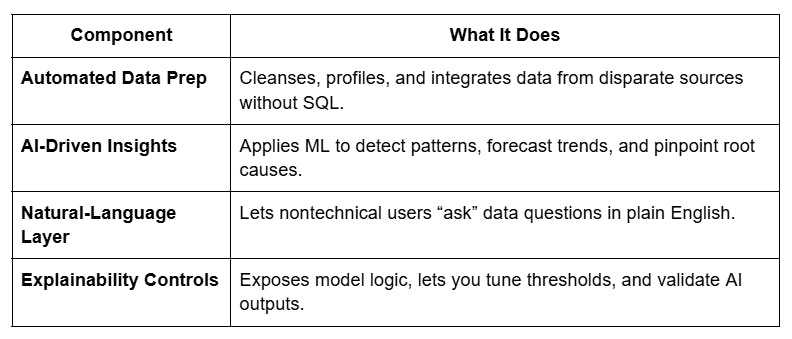
Checkout: What is an Autonomous Data Workspace and Why It Matters
How Each Pillar Works
Automated Data Prep
- Schema Detection & Cleansing: AI spots mismatched columns, nulls, and typos - then fixes or flags them.
- Vector-Enhanced Joins: Embedding-based matching unifies semantically similar fields (e.g., “cust_id” vs. “customerID”).
AI-Driven Insights
- Pattern Mining: Unsupervised clustering reveals hidden customer segments or cost centers.
- Anomaly Detection: Real-time engines alarm on KPI shifts and link them to probable drivers with one click.
Natural-Language Interaction
- Query & Narrative: Ask “Why did churn spike in April?” and get back a three-sentence TL;DR plus a drill-down chart.
- Conversational Bots: Integrations with Slack/Teams deliver insights on demand, e.g., “@analytics-bot, show me May revenue by region.”.
Explainability Controls
- Model Transparency: View which variables drove a forecast and adjust confidence thresholds.
- Human-in-the-Loop: Certify or override AI picks before they hit executive dashboards.
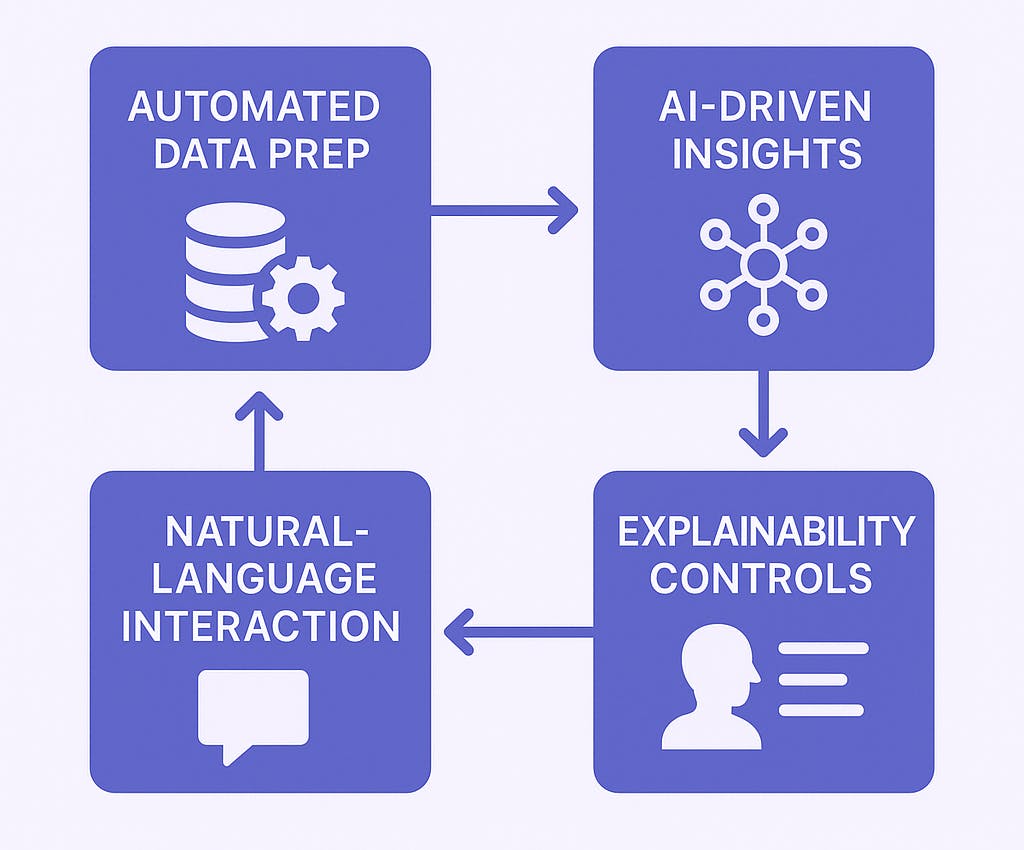
What Makes a Great Augmented Analytics System?
Before you pick a platform, look for:
- Explainable AI: Ability to inspect model logic, tweak thresholds, and trust the numbers
- API-First Scheduling: Cron-style jobs or webhooks to embed insights in apps or email alerts
- Low-Code Connectors: Prebuilt adapters for databases, CRMs, cloud storage - zero engineering drag
- Human-in-the-Loop Controls: Workflow approvals so analysts can certify AI-generated reports
4. Real-World Use Cases

Checkout: Top 5 Autonomous Data Platforms: Leading the Charge in 2025
5. Little-Known Industry Hacks (< 1 % of Teams)
- Vector-DB Report Cache
Store past analysis embeddings (e.g., Pinecone, Weaviate) to answer repeat queries in < 100 ms, cutting AI compute by up to 80 %. - Auto TL;DR Pipelines
Chain LangChain + your dashboard API to generate 3-sentence exec summaries on any report - trimming manual slide prep by 90 %.
6. Quick-Start Python Snippet
Combine this snippet with your platform’s scheduler API for an open-source + enterprise hybrid solution - no vendor lock-in.
7. Choosing the Right Augmented Data Analytics Platform
When vetting vendors, prioritize:
- Transparency: Can you trace and tune AI logic?
- Integrations: Are low-code connectors available for your data sources?
- Scheduling & APIs: Support for cron-style jobs or webhooks.
- Governance: Built-in lineage, RBAC, and audit logs for compliance.

Checkout: What Is the Modern Data Stack and How Does It Work in 2025?
Bottom Line:
Augmented Analytics isn’t a futuristic gimmick - it’s the new baseline for data-driven decision-making. By automating prep, surfacing deep AI-powered insights, and letting you chat with your data, Augmented Data Analytics empowers every team member to move faster, work smarter, and stay ahead of the competition.
Ready to stop wrestling with spreadsheets and start asking your data questions in plain English? With Autonmis you can:
- Spin up a full data pipeline and dashboard in minutes - no ETL scripts or SQL expertise required
- Get automated insights, alerts, and narratives the moment your data changes
- Empower every team member, from marketing to finance, to explore data on their own
Give it a try yourself: Start a conversation with your data at Autonmis and see how quickly you can turn questions into actionable insights.
Recommended Learning Articles
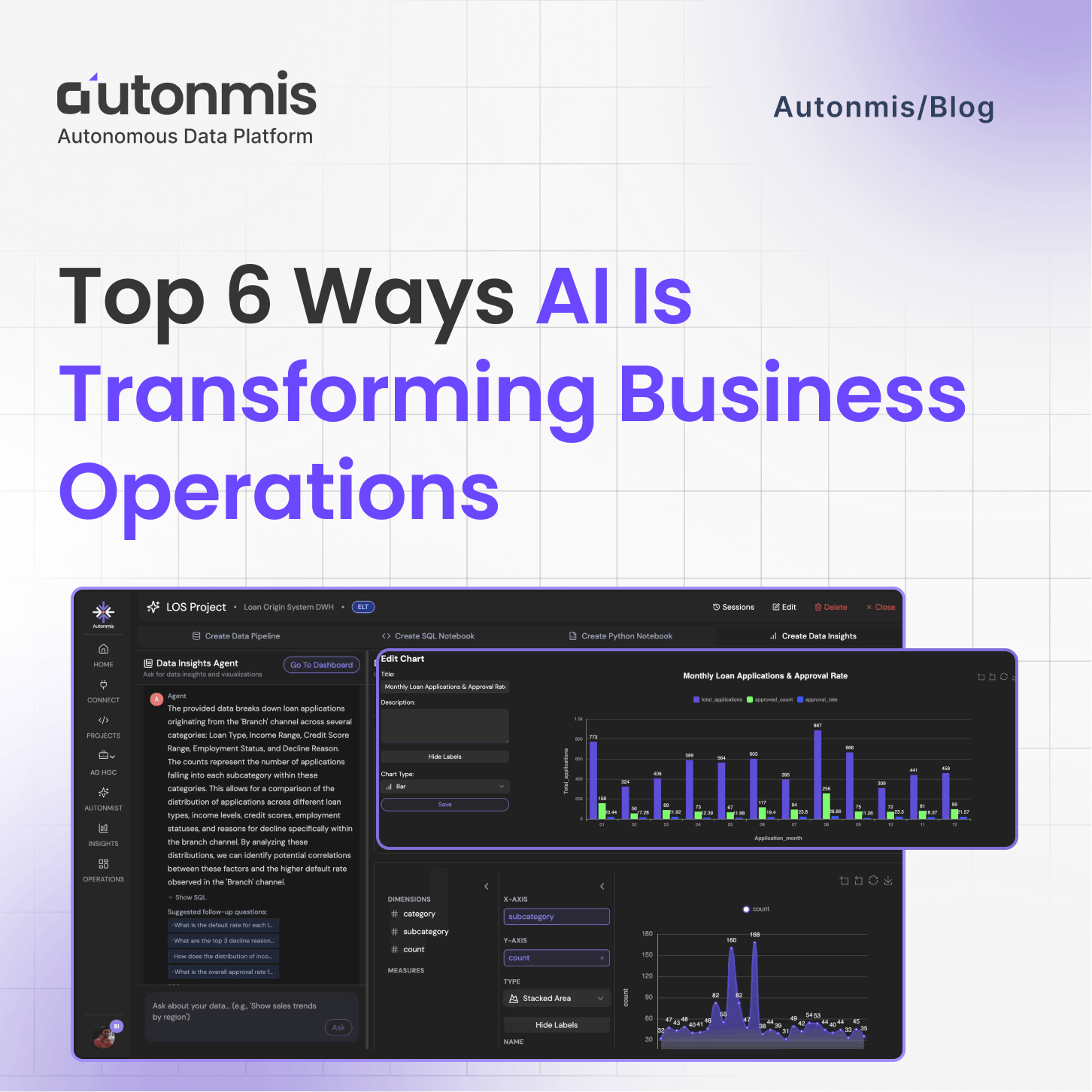
10/23/2025
Top 6 Ways AI Is Transforming Business Operations
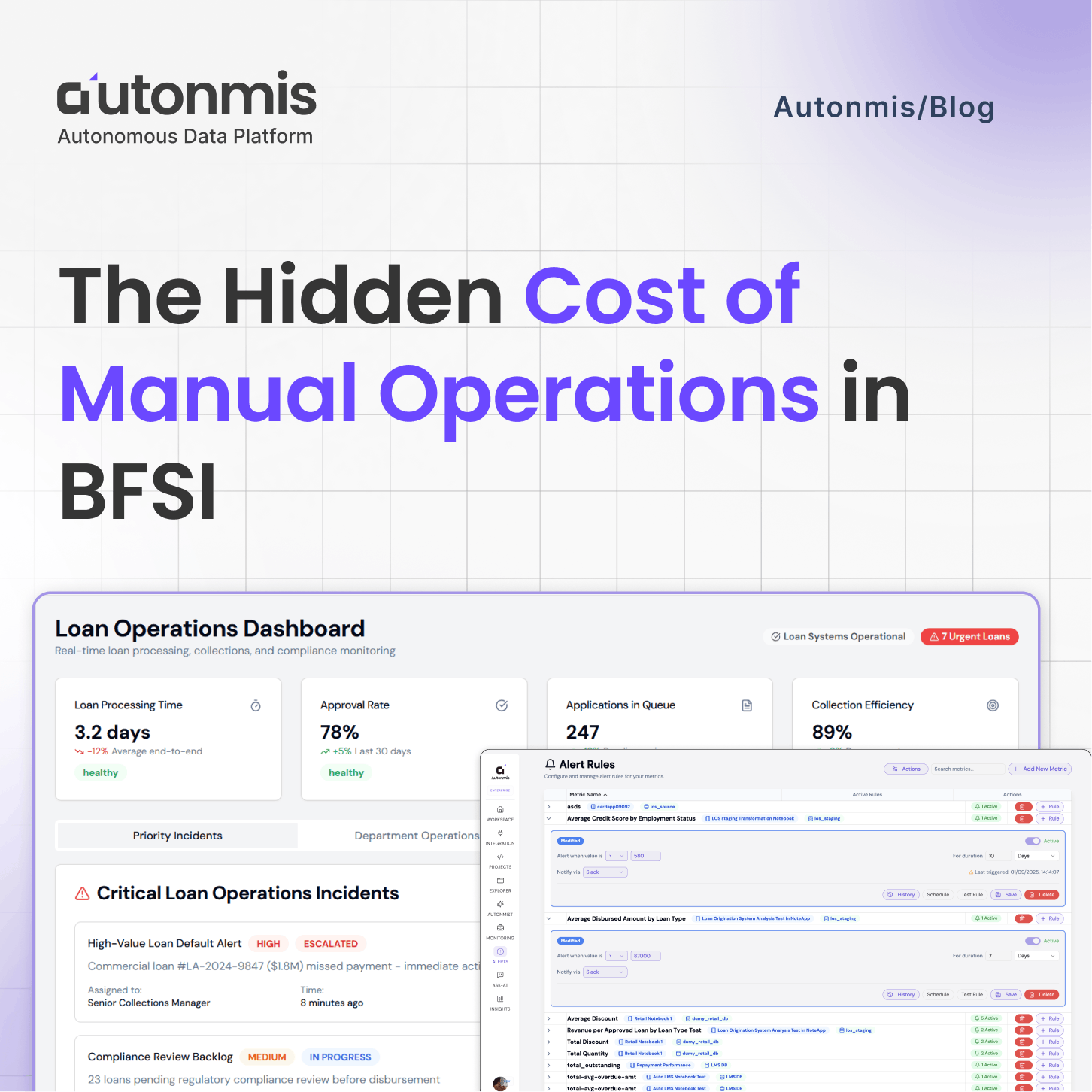
9/22/2025

AB
The Hidden Cost of Manual Operations in BFSI
Actionable Operational Excellence
Autonmis helps modern teams own their entire operations and data workflow — fast, simple, and cost-effective.